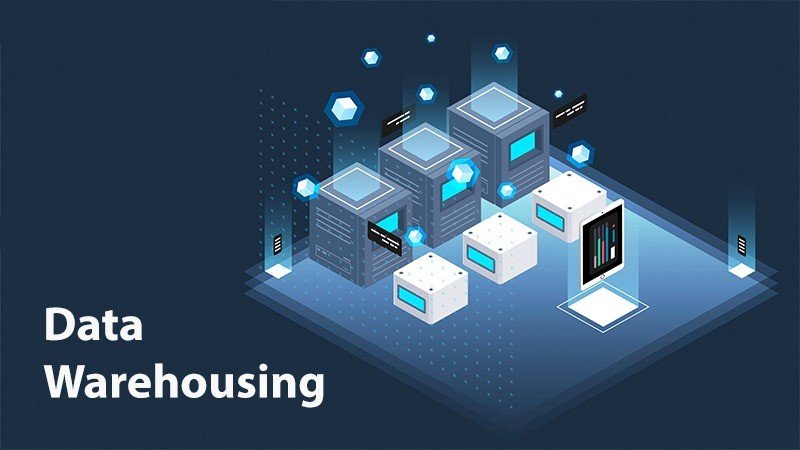The Role of Data Warehousing in Modern Business Intelligence

Businesses are swimming in data—tons of it, pouring in from every click, swipe, or purchase. While this influx of data is a goldmine, it can quickly become overwhelming without the right tools to harness and analyze it effectively. Enter data warehousing, the unsung hero of modern business intelligence (BI).
If you’ve spent hours pulling data from ten different platforms before even starting your analysis, or if you’ve felt that nagging sense that you’re missing key insights, this blog is for you. We’ll uncover what data warehousing is, why it’s critical for BI, and how it can empower you as a Business Analyst, Data Engineer, or IT Manager to make better, faster decisions.
What is Data Warehousing?
At its core, a data warehouse is a centralized repository where data from multiple sources is collected, stored, and organized. Think of it as your business’s data library—except instead of dusty bookshelves, it’s filled with structured, neatly categorized rows of data that are ready to be analyzed.
Unlike a traditional database, a data warehouse is specifically designed for querying and analysis, not for day-to-day operations. It’s optimized to handle large volumes of data and is built to provide a clear, unified view of your data landscape.
Key features of data warehousing include:
- Data Integration: Combining data from systems like CRM platforms, ERP tools, and customer interaction logs.
- Historical Storage: Housing data over time so you can compare performance year-over-year.
- Fast Retrieval: Complex analytical queries are processed efficiently, even with massive datasets.
Why Data Warehousing is Core to Modern BI
1. Simplifying Data for Analysis
Imagine trying to make sense of scattered data stored across multiple platforms and in different formats. It’s chaos. Data warehousing solves this by cleaning, organizing, and integrating diverse datasets.
For example, you might have sales data in one application, customer feedback in another, and marketing campaign performance data in a third. By consolidating these into a unified repository, you’re not just seeing the pieces—you get the full picture. A cleaned-up dataset is also much friendlier for visualization tools like Tableau or Power BI.
2. Supporting Timely Decision-Making
Business moves fast. Teams can’t wait for data to be pulled, pieced together, and double-checked for errors. Data warehouses enable real-time or near real-time analysis so you can respond to challenges and opportunities as they arise.
Example? A retail company identifying low-performing products early in the season and adjusting marketing strategies to avoid excess inventory.
3. Powering Advanced Analytics
The BI world is increasingly leaning on technologies like machine learning (ML) and predictive analytics. AI models thrive on high-quality, consistent data—a specialty of data warehouses.
With a well-maintained data warehouse, your team can build sophisticated predictive models more effectively, allowing you to anticipate customer behavior or accurately forecast demand.
Steps to Implementing a Data Warehouse
If you’re considering adopting a data warehouse but feel unsure where to start, here’s a simplified roadmap to guide you through the process:
Step 1. Define Your Objectives
Be crystal clear on what problems you’re trying to solve with a data warehouse.
Is it to minimize reporting delays?
Gain better insight into customer behaviors?
Simplify compliance reporting?
Knowing your ‘why’ will help you prioritize features and scale your infrastructure accordingly.
Step 2. Choose Your Tools and Platform
From traditional on-premise solutions like Oracle to cloud-based options like Amazon Redshift, Google BigQuery, or Snowflake, there are endless platforms tailored for data warehousing. Your choice will depend on factors like your budget, team expertise, and the volume of data you handle.
Step 3. Extract, Transform, Load (ETL) Processes
This is where your data is collected (extracted), cleaned and formatted (transformed), and moved into the warehouse (loaded). Modern ETL tools like Talend or Apache Nifi can make this process smoother.
Step 4. Test and Scale
Once set up, analyze a test dataset to confirm everything checks out. Then iterate and scale as more teams and departments begin to rely on the warehouse.
Examples of Data Warehousing in Action
Customer Service
A telecom company integrates data from call centers, email logs, and chat support into a central data warehouse. By analyzing the data holistically, they identify pain points in customer interactions and improve their operations accordingly.
Retail Analytics
An e-commerce brand uses data warehousing to track sales trends over time while integrating customer demographic information. This helps marketing teams run more effective, targeted campaigns.
Overcoming Common Data Warehousing Challenges
While data warehousing has its perks, it’s not without its challenges. Here are some issues you may face—and how to tackle them.
1. Handling Large Volumes of Data
Storage and processing power requirements can escalate quickly as data volumes grow. Cloud-based solutions are a popular choice to tackle this scalability challenge.
2. Data Security Risks
With great data power comes great responsibility. Ensure strong security measures like encryption, access controls, and compliance checklists are in place.
3. Expensive Upfront Costs
Building a data warehouse can feel intimidating due to the initial investment. But the long-term ROI—through efficiencies and better analytics—far outweigh the early expense.
Making Data Work for You
Data warehousing isn’t just a tool; it’s the foundation of a smart, analytics-driven organization. For business analysts, data engineers, and IT managers, it’s the bridge that turns raw data into actionable insights. By simplifying data analysis, enabling real-time decisions, and supporting advanced analytics, a robust data warehousing system can unlock your company’s full potential.
The question is no longer ‘Why use data warehousing?’ but rather ‘How quickly can we adopt it?’ With proper planning, the right tools, and a clear strategy, the potential benefits are limitless.
If your organization is ready to leverage data warehousing and step up its business intelligence game, now’s the time to take the first step.






